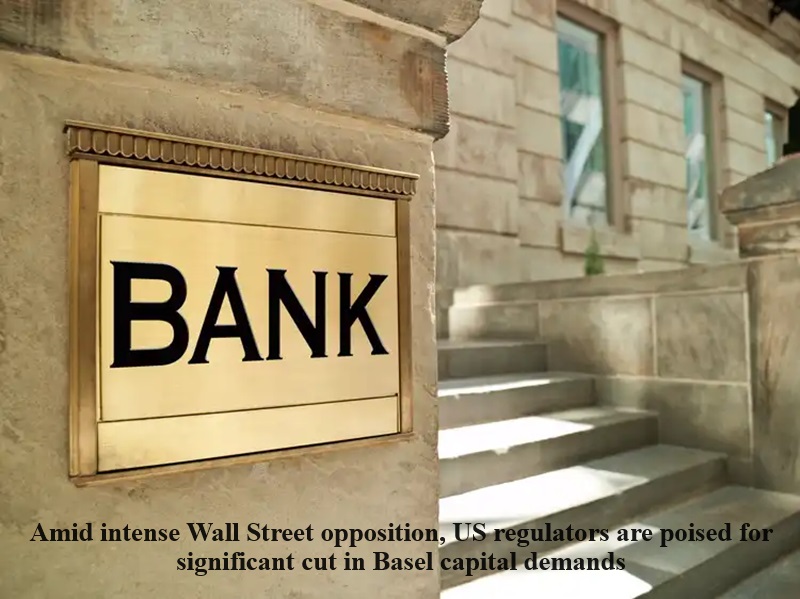
US regulators are reportedly preparing for a substantial reduction in the additional capital requirements imposed on banks under the proposed “Basel III” rule.
The proposal, introduced by bank regulators led by the Federal Reserve in July, seeks to revamp how banks with assets surpassing $100 billion compute the cash reserves necessary to absorb potential losses.
However, Wall Street has mounted a vigorous resistance against the rule, prompting regulatory officials to contemplate significant modifications.
Expected Capital Reduction:
Insiders from the industry, including eight executives in regular communication with regulatory agencies, disclosed ongoing discussions aimed at substantially diminishing the proposed capital burden.
The initial proposal envisaged an aggregate capital hike of approximately 16 per cent for the affected lenders.
Nonetheless, this figure is projected to experience a considerable decrease as regulators embark on an exhaustive revision of the draft.
The primary focus centers on recalibrating the assessment of potential losses stemming from operational risks, particularly in fee income associated with lending services.
Operational Risk and Mortgage Adjustments:
The most substantial capital savings are anticipated to result from alterations in how banks assess potential losses from operational risks, a costly component of the proposal.
Wall Street has advocated for decreased risk weights for fee income linked to lending services.
Moreover, regulators are deliberating the elimination or reduction of higher risk weights on mortgages for low-income borrowers and tax credits for renewable energy.
These potential adjustments form part of the ongoing rewriting led by Fed Vice Chair for Supervision Michael Barr, in collaboration with Fed Chair Jerome Powell.
Regulatory Response and Opposition:
Early-stage regulatory discussions indicate a readiness to address concerns raised by industry stakeholders.
Powell, in congressional testimony, acknowledged the fierce opposition, hinting at “broad, material” changes expected in the revised rule.
Wall Street’s unprecedented efforts to derail the proposal encompass advertising, grassroots campaigns, lobbying, and potential legal action.
However, officials have not confirmed whether the rule will be reintroduced, leaving the timeline for its finalization uncertain.
Dissent and Legal Challenges:
The Basel III proposal, aligning with international capital standards, has encountered dissent within the Fed’s board.
Governors Michelle Bowman and Christopher Waller, along with Vice Chair Philip Jefferson, voiced reservations about the potential adverse impact on borrowers.
The Bank Policy Institute has enlisted former Labor Secretary Eugene Scalia to explore the possibility of litigation, underscoring the unexpected intensity of opposition faced by regulators.
This dissent may prove pivotal in any legal disputes, highlighting divisions among experts.
Industry Engagement and Timeline Concerns:
Federal Reserve officials, including Powell and Barr, have participated in over 50 meetings or calls with hundreds of industry executives since September.
Despite these engagements, consensus remains elusive, and challenges persist in reaching an accord with the FDIC, chaired by Martin Gruenberg, a noted Wall Street critic.
While some aim to finalize the rule by summer, apprehensions linger regarding the ambitiousness of the timeline.

Post Your Comments